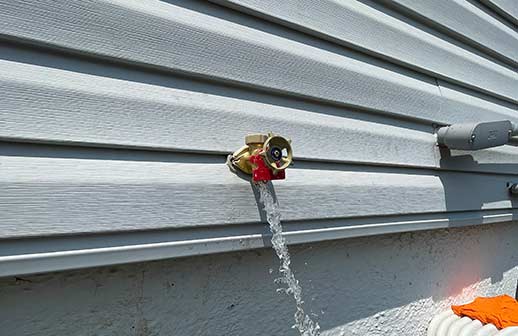
As the cold winter months approach, one of the most important tasks for homeowners is to prevent their outdoor faucets from freezing. Frozen outdoor faucets can cause significant damage to the plumbing system and can be expensive to repair. In this complete guide, we will explore various methods and strategies to prevent frozen outdoor faucets, ensuring that you can continue to use them throughout the winter season without any issues. Whether you are a new homeowner or have been through the freezing winters before, this guide will provide you with valuable insights and tips to protect your outdoor faucets.
Understanding the Risks
Before we delve into the preventive measures, it is essential to understand why outdoor faucets freeze in the first place. Outdoor faucets are particularly vulnerable to freezing due to their exposure to the cold temperatures and the water connections remaining exposed. When temperatures drop below freezing, the water inside the pipes can freeze, causing them to expand and potentially crack. This can lead to water leakage or burst pipe emergencies when the ice thaws, leading to costly repairs or replacements.
Insulate Outdoor Faucets
One of the most effective ways to prevent frozen outdoor faucets is by insulating them. This provides a layer of protection against the cold temperatures and helps to maintain a more stable temperature inside the pipes. There are several methods for insulating outdoor faucets:
- Insulated Faucet Covers: These covers are specifically designed to fit over outdoor faucets and provide insulation. They are made from materials that can withstand cold temperatures and block the flow of cold air, keeping the faucet and pipes protected.
- Heat Tape: Heat tape is a flexible electrical heating element that can be wrapped around pipes and faucets. It provides a consistent source of heat that prevents freezing in the pipes and keeps the water flowing smoothly.
- Insulation Sleeves: Insulation sleeves are foam or rubber tubes that can be fitted around the outdoor faucets. They provide a layer of insulation and help to prevent the transfer of cold air to the pipes.
Disconnect and Drain
Another effective preventive measure is to disconnect and drain the outdoor faucets before the cold weather sets in. This ensures that there is no water left in the pipes that can freeze and cause damage. Here’s how you can disconnect and drain the outdoor faucets:
- Turn off the water supply: Locate the shut-off valve for the outdoor faucets and turn it off. This will prevent any water from flowing into the pipes.
- Open the faucets: Open the outdoor faucets and let any remaining water drain out. This will empty the pipes and minimize the risk of freezing.
- Store hoses indoors: Remove any hoses connected to the outdoor faucets and store them indoors. Hoses left outside can retain water and freeze, leading to damage.

When the outdoor faucets are not in use, keep them closed to prevent cold air from entering the pipes. This will help maintain a more consistent temperature and reduce the risk of freezing.
Install Freeze-Proof Faucets
If you live in an area with extremely cold temperatures, it may be worth considering installing freeze-proof faucets. Freeze-proof faucets are designed to prevent freezing by having the shut-off valve located inside the heated part of the house, rather than outside. This design keeps the water supply line from being exposed to the cold temperatures, significantly reducing the risk of freezing. Consult a professional plumber to assess your plumbing system and determine if freeze-proof faucets are a suitable option for your home.
Additional Tips
In addition to the aforementioned preventive measures, here are some additional tips to help you prevent frozen outdoor faucets:
- Apply insulation to exposed pipes: Pipes leading to outdoor faucets should also be insulated to prevent freezing. Use pipe insulation sleeves or foam insulation to wrap around the exposed pipes.
- Seal any gaps or cracks: Inspect the area around outdoor faucets for any gaps or cracks that could allow cold air to enter. Use weatherstripping or caulk to seal these gaps and minimize exposure to cold air.
- Keep the faucets closed: When the outdoor faucets are not in use, keep them closed to prevent cold air from entering the pipes. This will help maintain a more consistent temperature and reduce the risk of freezing.
- Monitor weather forecasts: Stay informed about upcoming freezing temperatures and take preventive measures accordingly. Cover outdoor faucets with insulated covers or use heat tape when extremely cold weather is expected.
To Conclude
Preventing frozen outdoor faucets is crucial in maintaining a well-functioning plumbing system during the winter months. By following the methods and strategies outlined in this complete guide, you can significantly reduce the risk of frozen outdoor faucets and avoid costly repairs. Remember to insulate the faucets, disconnect and drain them before winter, consider installing freeze-proof faucets, and implement additional tips to further protect your plumbing system. Taking these preventive measures will ensure that your outdoor faucets remain functional and ready for use, even in the coldest of winters.